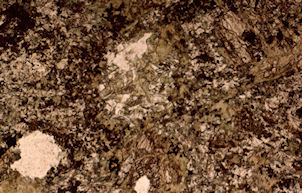
Figure 1: Group I-1 axe Be10/241 in PPL and XPL (Field of View (FoV) is 4mm). Click image to enlarge
The first and largest sub-group of IPG Group I identified, GpI-1, contains 59 of the 119 thin-sections examined (see Table 2 for details). Collectively these thin-sections comprise altered euhedral, occasionally partly ophitic clinopyroxenes (cpx), probably augite, with very pale brown to clear colour in plain polarised light (ppl) and first to mid-second order birefringence in crossed polars (xpl) (blue, red and purple are the most frequent interference colours encountered, with occasional bright lime green colours suggesting augite/diopside). Basal cpx sections show clear, approximately 90° cleavage intersections and show grey to white colour in xpl. Most cpx crystals are approximately 1mm long, although cpx crystals to 2mm are frequently observed. Varying degrees of secondary alteration is seen across the sub-group where cpx is found replaced by fibrous to tabular grains of amphibole, probably tremolite-actinolite and hornblende, the latter recognised by the middle second order birefringence. Some larger grains of amphibole display a diamond lattice created by its two cleavages intersecting at approximately 60°.
Chlorite is not obvious in many GpI-1 thin-sections as it is difficult to identify positively in a fine-grained groundmass, with only very small patches showing the distinctive anomalous Berlin blue colour in xpl that is indicative of chlorite.
In general the primary feldspar is almost totally altered to a fine mica, probably sericite, and plentiful fine-grained actinolite, both within pseudomorphs of feldspar. Secondary alteration makes it hard to see any type of feldspar twinning, hence identification of the type of feldspar is difficult. However, it is most likely to be plagioclase recognised in xpl by the lath to tabular outlines seen with indistinct lamellar twinning picked out from the variably altered grey-black groundmass of very fine-grained sericite.
Actinolite needles and prisms to 0.1mm in length are common within the groundmass, although they are not present in every GpI-1 thin-section. Cloudy masses of very fine grains with high relief and indeterminate birefringence seen within the feldspar alteration are taken as some form of fine granular epidote. However, the presence of ilmenite, often close to the cloudy masses, indicates that these fine-grained, high relief areas could also be granular sphene (note the term 'sphene' is used in preference to 'titanite'). Obvious grains of epidote are very rare in GpI-1 thin-sections. Apatite and biotite mica are rare in this subgroup.
Ilmenite is the most common opaque mineral, present as 0.5-2mm sized angular masses usually showing polygonal outlines with 60° internal angles between crystal faces and is also found as elongate grains, with several grains stacked to form a ladder-like appearance. Ilmenite grains usually appear corroded (i.e. have irregular sides, often bulbous with slightly transparent patches) and often have minor alteration to sphene/epidote or leucoxene, with the latter more common than the former. (Note that axe thin-sections are not polished so reflected light petrography could not be used to make a positive identification of opaque grains; identification is primarily based on grain shape and it is noted that pyrite and magnetite can also appear as pseudohexagonal and triangular shaped grains.)

Figure 1: Group I-1 axe Be10/241 in PPL and XPL (Field of View (FoV) is 4mm). Click image to enlarge
All thirteen members of GpI-2 are similar to GpI-1, with the main difference that large, >2mm, partly ophitic cpx are present in addition to smaller non-ophitic cpx as seen in GpI-1. Secondary biotite is seen as small brown patches, with the quantity increasing in conjunction with the amount of alteration. Clear, small (<0.1mm) grains of epidote are seen in ppl. No acicular actinolite is found in GpI-2. Feldspar and pyroxene alteration is similar to that found in GpI-1, as is the lack of apatite and the rare presence of chlorite.
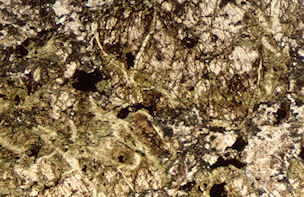
Figure 2: Group I-2 axe Co154/740 in PPL and XPL (FoV 4mm). Click image to enlarge
GpI-3 is similar to GpI-1, but with larger opaque grains that are almost totally altered to a very fine-grained mineral, probably sphene. In two of the six thin-sections in this sub-group (Co69/600 and 69a/600) the alteration of the opaque grain has revealed distinct polygonal skeletons, with rhombic and triangular partings indicating the host grain was probably ilmenite. Pyroxenes are altered around rims to a fibrous amphibole.

Figure 3: Group I-3 axe Co281/1344 in PPL and XPL (FoV 4mm). Click image to enlarge
The notable feature of the 16 GpI-4 thin-sections is that the euhedral, 1mm-sized, cpx grains have first to low second order birefringence, with extinction angles approximately 45° and 25°, suggesting it is probably low Ca augite and/or pigeonite. Secondary, amphibolitic alteration of the cpx is similarly pale coloured, suggesting tremolite and not ferroactinolite is present, although in a few GpI-4 thin-sections second order birefringence is seen in some amphibole grains. In general there is more fibrous amphibole present in this sub-group than GpI-1, suggesting a higher degree of alteration. The groundmass has many needles and small laths of actinolite and sericite patches with rare apatite. In all other respects this sub-group is similar to GpI-1.
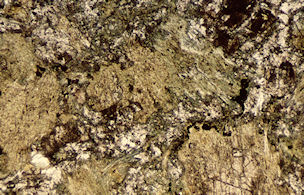
Figure 4: Group I-4 axe Be49/1328 in PPL and XPL (FoV 4mm). Click image to enlarge.
The two members of GpI-5, Wi434/1873 and Wi439/1878 appear 'fresher' than GpI-1, although with the same primary cpx-feldspar mineralogy. Plagioclase feldspar clearly shows lamellar twinning, which is only partly obscured by slight alteration. Partially altered cpx crystals are consistently >2mm, non-ophitic with embayed feldspar laths. Secondary amphibole is common, as replacement of the pyroxenes and as discrete acicular to bladed crystals growing across the feldspar. A small amount of apatite is clearly visible. Fine-grained brown, secondary, biotite is present along the edges of the feldspar.
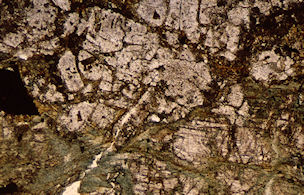
Figure 5: Group I-5 axe Wi434/ 1873 in PPL and XPL (FoV 4mm). Click image to enlarge
Distinct bright (xpl) amphibole, possibly hornblende, has almost totally replaced the cpx in the 13 GpI-6 thin-sections. Feldspar laths, up to 3mm long, are recognised in the groundmass, along with minor quantities of fine-grained quartz. Apatite is present in all GpI-6 thin-sections. Generally GpI-6 appears to have undergone a higher degree of metamorphic alteration than GpI-1, but had the same original mineralogy.

Figure 6: Group I-6 Axe Co110/681 in PPL and XPL (FoV 4mm). Click image to enlarge
The three members of GpI-7 (Co64/588, Wi244/966 and Wi49/172A) are markedly cloudier in appearance than GpI-1 and lacking fine-grained acicular actinolite. Relict small non-ophitic and larger ophitic pyroxenes are visibly altered to a fine feathery, almost granular, secondary amphibole. Apatite is clearly present, as are small amounts of secondary biotite. GpI-7 has a similar primary mineralogy to GpI-1 but has undergone slightly different alteration.
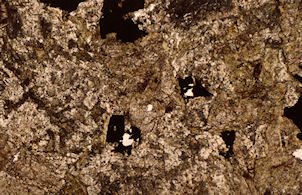
Figure 7: Group I-7 axe Wi49/172b in PPL and XPL (FoV 4mm). Click image to enlarge
Both Co358/1627 and Co363/1632, the two members of GpI-8, have bright amphibole pseudomorphs after cpx, dominating the thin-section. No feldspar is seen, either as discrete feldspar or lath-like shapes in the groundmass. Fibrous tremolite-actinolite has a distinct wavy appearance, and although there is no preferred alignment of grains, the fibrous grains pick out a possible shear fabric. Fine, irregular opaque grains are scattered throughout both thin-sections. No biotite is seen and epidote is only present as cloudy masses of fine grains. These two thin-sections contain more fibrous amphibole, with brighter birefringence than GpI-1, but probably had similar original mineralogy to GpI-1.
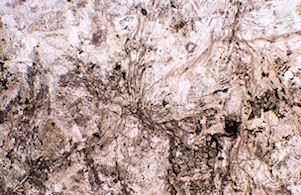
Figure 8: Group I-8 axe Co358/1627 in PPL and XPL (FoV 4mm). Click image to enlarge
Thin-section Co157/751, the only member of GpI-9, is different from GpI-1 in that the feldspar grains are less altered than the cpx grains and it has both ortho- and clino-pyroxene present. In some places secondary, fibrous, amphibole has completely replaced primary pyroxene. No twinning is seen in the feldspar. The range of pyroxene textures, from marginally to totally replaced, and the presence of both pyroxenes makes this thin-section different from any IPG Group I thin-section examined.

Figure 9: Group I-9 axe Co157/751 in PPL and XPL (FoV 4mm). Click image to enlarge
Thin-section Wi364/1418 is the sole member of GpI-10 and is similar to GpI-1 in that it contains primary pyroxene and feldspar, the latter having been completely altered. It is unique in the collection, having small clusters of clinopyroxene grains in addition to larger, ophitic grains.
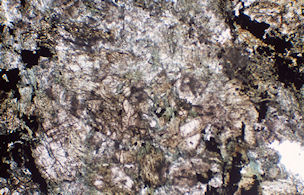
Figure 10: Group I-10 axe Wi364/1418 in PPL and XPL (FoV 4mm). Click image to enlarge
GpI-11 axe Wi440/1879 has altered ophitic pyroxene up to 2mm across which is surrounded by altered, but recognisable feldspar and free quartz, the latter with rare granophyric texture. Brown, possibly primary, amphibole is seen. The secondary alteration of the cpx is predominantly to a very fine brown fibrous mineral (amphibole?), within the bounds of the original pyroxene grain. All feldspar present has been partly altered to sericite and epidote. Some chlorite can be seen as small Berlin blue patches within the feldspar alteration. The style of alteration of the pyroxenes, within and not across the crystal boundary is unique and not seen in any other of the thin-sections examined.

Figure 11: Group I-11 axe Wi440 in PPL and XPL (FoV 4mm). Click image to enlarge
Thin-section Do146/1762 is dominated by platy chlorite with deep brown/opaque birefringence not seen in any other of the IPG Group I thin-sections. Plentiful small rhombs of actinolite penetrate the platy chlorite fabric. No pyroxene is visible and all feldspar is heavily altered but still recognisable. Small amounts of stressed quartz and apatite are present. Hence GpI-12 is unlike any other IPG Group I thin-section examined.
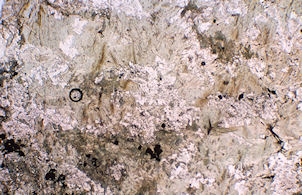
Figure 12: Group I-12 axe Do146/1762 in PPL and XPL (FoV 4mm). Click image to enlarge
The thirteenth sub-group, GpI-13, represented by CoGWA3, is petrographically distinct from all other thin-sections assigned to IPG Group I by having large, 2mm, almost asbestiform aggregates of tremolite, probably after feldspar, often surrounding a chlorite (penninite–Mg rich chlorite, typified by the anomalous Berlin blue colour in xpl). Patches of medium to high relief, brown granular grains (seen in ppl) are most probably biotite, while other, clearer high-relief patches, show mid-second order interference colours of amphibole replacing pyroxene. In the latter case the amphibole is not fibrous/acicular, but granular. It is unlike other IPG Group I thin-sections examined.
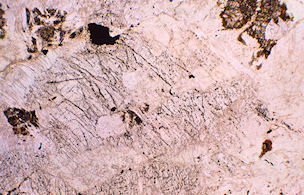
Figure 13: Group I-13 axe CoGWA3 in PPL and XPL (FoV 4mm). Click image to enlarge
© Internet Archaeology/Author(s) URL: http://intarch.ac.uk/journal/issue26/23/2.4.1.html
Last updated: Wed Jul 29 2009